Introduction
The Ottoman Empire or the Devlet-i Aliyye-i Osmâniyye is counted among the very few global empires of medieval times, which at its greatest extent stretched all the way from the borders of Iran to the gates of Austria, while also encompassing thick slices of the African Mediterranean coast from Egypt to Algeria. Suffice it to say, the realm encompassing all of the three ‘Old World’ continents comprised a multinational, multilingual empire that ‘almost’ served as the eastern answer to Rome.
In fact, in many ways, it can be argued that the Ottomans carried forth the tradition of Roman empire-building via their political and military systems that were intrinsically tailored to total warfare. After all, they were both the conquerors and inheritors of the grand Roman bastion of Constantinople. So without further ado, let us take a gander at the history and origins of the Ottoman Empire and its army.
Contents
- Introduction
- A State Founded By Refugees
- Religious Sympathy Resulting in Boosted Support
- The ‘Roman’ Way of Military Planning
- Dazzling Organization and Camp Discipline
- Janissaries and Christian Motifs
- Sipahi – the Cavalry Backbone of the Ottoman Army
- The Raiders from Beyond
- ‘Hostages’ Who Fought as Elite Cavalry
- The Classic Battlefield Tactic of the Ottomans
- Specialization in Giant Cannons
A State Founded By Refugees
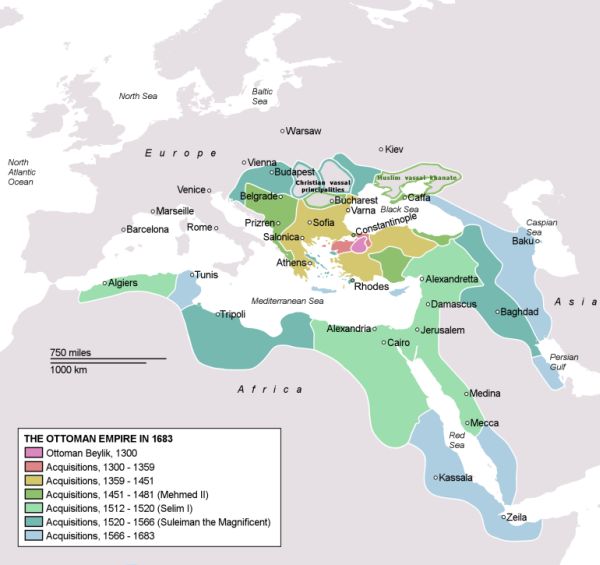
Like all great empires, history has to offer, the initial rise of the Ottoman Empire is shrouded in mystery with facts interspersed with legends. Anyhow, beyond romantic musings and heroic endeavors, the state was probably founded by Osman I (the Ottomans are named after him) sometime in 1299 AD, long after his original tribe fled from the Mongols and settled in Seljuk Anatolia as refugees, around the border village of Sogut.
Interestingly, Osman himself might not have had any princely lineage, but surely demonstrated his leadership qualities over a rag-tag bunch of followers who ranged from Turcoman nomads, free-booting religious volunteers (known as gazis), nominal peasants, and even Christian border guards who were dissatisfied with their Eastern Roman overlords.
Ruling from the saddle, Osman was known for his lightning military raids, and consequently, his small realm quickly expanded to incorporate some frontier castles and a few towns, thus providing a semblance of a tiny yet independent kingdom.
Yet this ‘kingdom’ was perched precariously on the very borders of the Eastern Roman (Byzantine) Empire. And still, in spite of the unenviable ‘frontier’ position, as historian Dr. David Nicolle noted, it was this very proximity to the Eastern Romans that led to the Ottoman state’s ascendancy in Anatolian affairs.
Two factors probably worked in favor of Osman, with the first pertaining to his renown among the Muslim populace of the surrounding Seljuk lands, especially after his victory over a Byzantine army in 1301 AD. This inspired many gazis and religious brotherhoods to flock to the frontier lands of the Ottoman state to wage their “holy war” against the Eastern Romans, and in the process gather some booty. The second and arguably more crucial factor ironically related to the desperate resistance provided by the Romans themselves, which in turn tempered the core Ottoman forces.
These were valuable military experiences gathered by Osman’s followers. Meanwhile, the border skirmishes tended to disassociate the conflict from the inward-situated towns and villages, thus providing the much-needed ‘breathing space’ for the incoming civilian population to settle down.
Religious Sympathy Resulting in Boosted Support
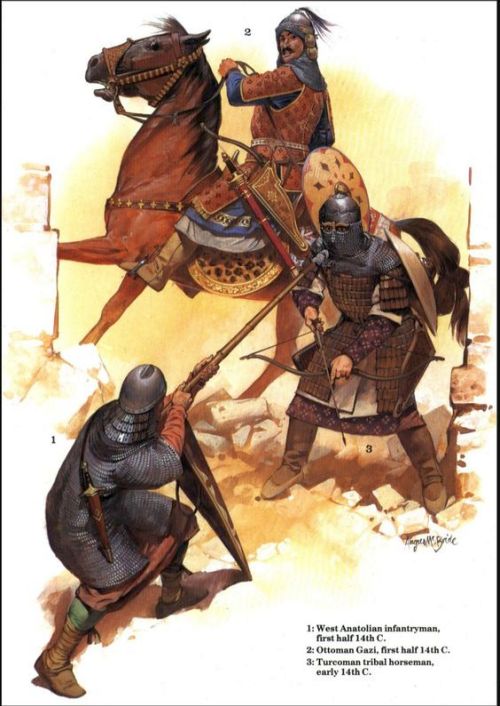
Interestingly, in spite of the initial profusion of the gazis, in the succeeding years after Osman, the religious outlook of the nascent Ottoman state morphed into a complex yet dynamic system that was not dulled by the narrow-minded “holy wars”. In fact, the small kingdom gradually started to incorporate a form of syncretism where some elements of traditional Islam were mixed with both pagan Turkish shamanism and Christianity followed by many peasants.
The dervishes (Muslim ascetics) who were often considered heretics in other Islamic domains, took center stage in Ottoman military affairs with their disparate followers (Muslims and Christians alike) and brotherhoods populating the rural regions bordering the Byzantine Empire.
The official Ottoman policies also tended to mirror this dynamic social scope, where the rulers were more sympathetic to the local population than the previous overlords. Many native Orthodox Christians were especially supportive of this Ottoman system, given their distaste for the European Catholic interlude that ravaged their lands in the preceding century.
More importantly, the Ottomans had the habit of dividing their subjects into specific military classes, which initially allowed the native Christian nobles to maintain their autonomy and fiefs even under Ottoman rule.
The ‘Roman’ Way of Military Planning
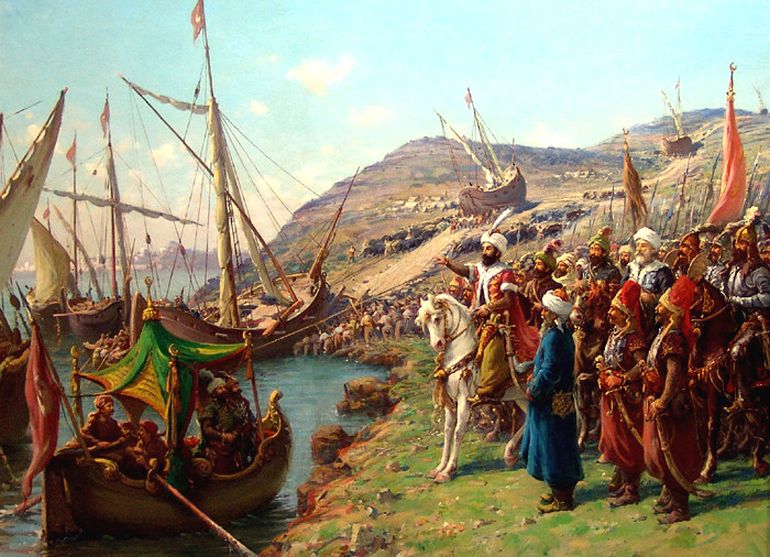
Given their penchant for adaptation and military experience, it is not surprising that the rising Ottoman Empire took its campaigns seriously. But intriguingly enough, there was a genuine method to their military planning that sort of corresponded more with the ancient Romans, as opposed to the feudal constraints of the contemporary medieval kingdoms.
For example, before commencing a military endeavor, the commanders consulted with old soldiers (who took part in previous conflicts), experts, and even war records. In the next step, they proceeded on to accumulate as much food and armaments as possible, and these stores were then strategically complemented by ‘live’ produce that was expected from the designated villages along their campaign route.
Finally, the scouts were unleashed upon the frontiers, and these hardened men inconspicuously placed shafts and tokens that marked the best possible routes into the enemy territory. Subsequently, roads and bridges in the proximate areas were repaired (and even constructed) – thus resulting in an infrastructural system that supported the marching army.
Dazzling Organization and Camp Discipline
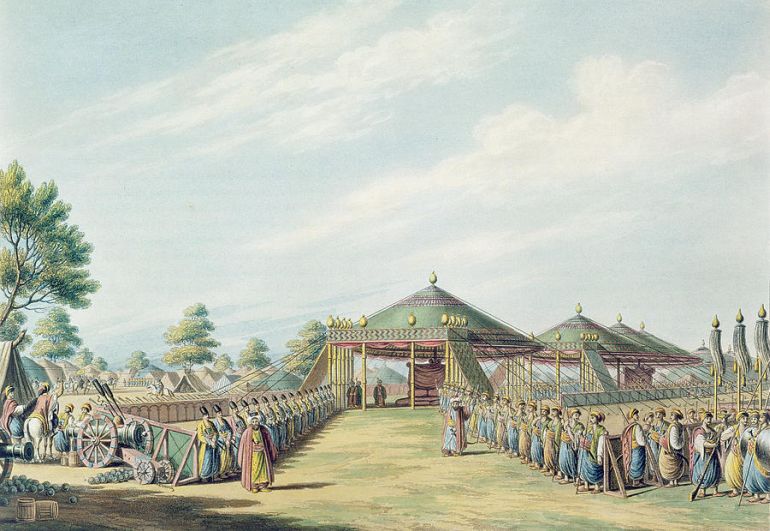
The success of the military campaigns was however not just limited to complex planning maneuvers; the Ottomans also showcased their brand of fierce discipline during marching and camping, which was in stark contrast to many of their European adversaries. Such measures entailed frugal food habits inculcated among soldiers of all statuses ranging from officers to common infantrymen.
This was backed up by proper sanitation measures inside the camp and prohibition of alcohol consumption during marching – which led to practical mitigation of camp diseases and curbing of rowdy army behavior common during the time. But arguably the most striking feature of an Ottoman camp was the eerie level of quietness demonstrated by the troops – as documented by many European observers.
Beyond habits, discipline was also instilled through strict training, which especially favored the famed cavalry forces of the Ottoman Empire. These strenuous exercises included horse archery and a game known as cirit – which entailed the precise throwing of javelins from horseback.
Janissaries and Christian Motifs
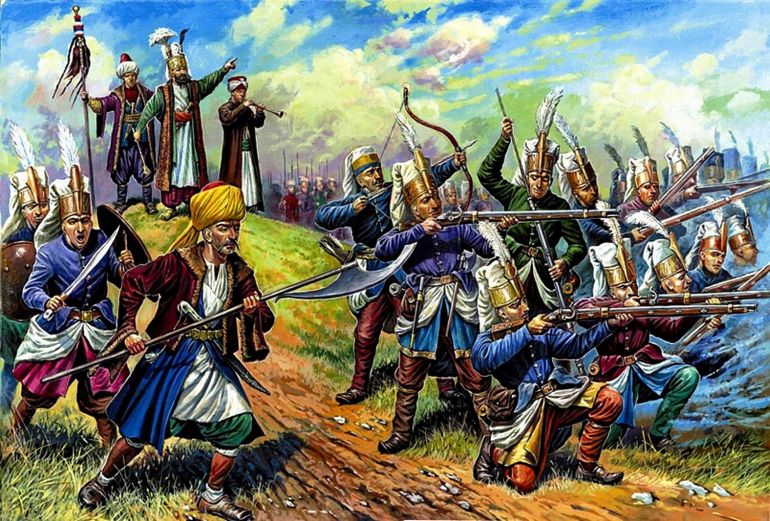
The most famous of all Ottoman Empire military units pertains to the Janissary (yeniçeri meaning ‘new soldier’). Belonging to the special kapıkulu class, their unique status didn’t either fall into freeman or ordinary slaves but were considered an elite part of both the Ottoman military and society.
Much has been said about their rigorous training and discipline, along with the infamous devşirme system which required a yearly quota of non-Muslim boys from the ages of 6 to 14 to be forcibly enrolled as indoctrinated Muslim Janissaries (at least till the year 1648 AD).
Interestingly, regarding the latter-mentioned system, there were times when Christian peasants in the Ottoman-controlled European territories willfully wanted their children to be selected, so as to give them better prospects in life.
Now according to Dr. Nicolle, beyond training and indoctrination, it was the prevalence of rare Christian motifs that stood as a testament to the originally non-Islamic origins of the Janissaries and the collusive system of the early Ottoman Empire. To that end, the first batch of Janissaries may have just been Christian prisoners of war who were freed and asked to serve in the Ottoman army.
This relatively open-minded scope allowed for Bektashi dervishes to serve as dedicated chaplains inside Janissary barracks, and these ascetics, in turn, were influenced by the initial Christian beliefs of the recruits. In fact, the teachings of Haji Bektash Veli (the founder of the Bektashi dervish order) were sometimes identified with that of Orthodox Christian saints. Such synergistic religious overtones translated to unexpected displays, like the carrying of gospel quotations by many Janissary troops as lucky charms.
Sipahi – the Cavalry Backbone of the Ottoman Army
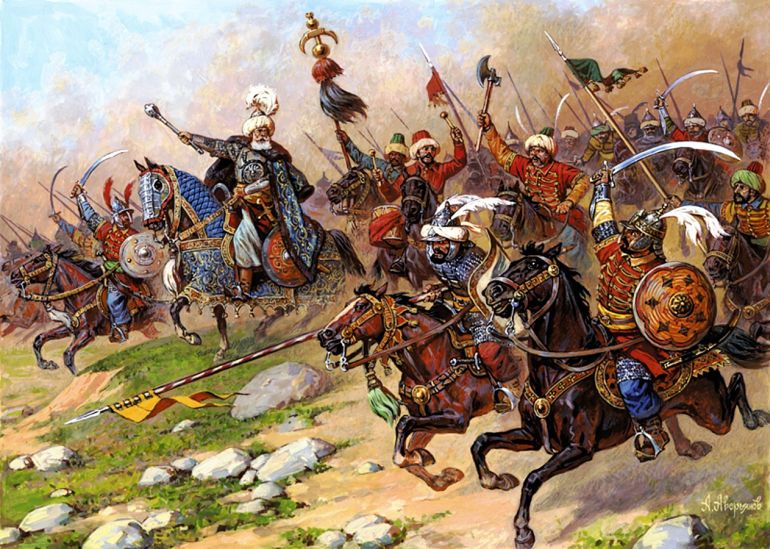
While Janissaries had often stolen the historical limelight, in part due to their ‘exotic’ origins and early firearms adoption, many historians reckon that the provincial Sipahis cavalry played a greater role in the Ottoman Empire military. Somewhat mirroring the social equivalent of a European knight, the sipahi was given a timar fief instead of a salary.
But unlike the strict feudal hierarchy of Europe, the sipahi only held his allotted land in trust, and as such had no extraordinary rights over the farmers working on his land. In fact, he even had to pay his peasants for working in his fief – with each timar estimated to provide a yearly revenue of 20,000 akçe, which was around 4 times the income of a contemporary teacher.
In any case, despite the economic dependency on his nominal subjects (which in turn led to a better military-civilian relationship than that of many European states), the sipahi was an expert horseman feared by his foes – as attested by European observers. Often lightly armed when compared to the heavy household troops of the Sultan, it was their inherent mobility that stood out as the greatest advantage on the medieval battlefield.
To that end, military history, according to Dr. Nicolle, suggests that the evolution of most European battlefield tactics was governed by the need to counter the fast-moving sipahis of the Ottoman Empire, as opposed to the cumbersome shoot-and-charge ploys used by the massive formations of Janissary infantrymen.
The Raiders from Beyond
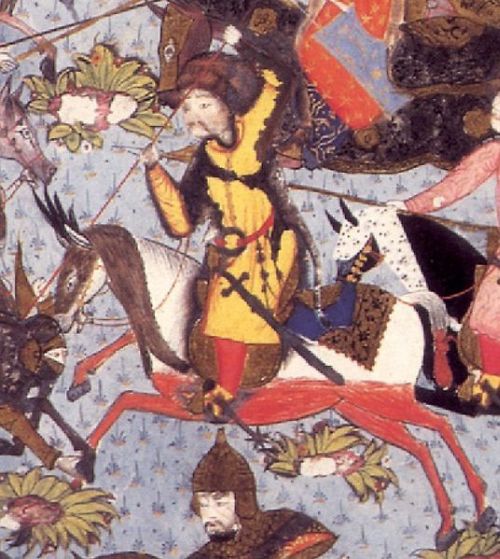
And since we talked about the crucial scope of mobility in medieval battlefields, the Ottoman Empire armies incorporated another flexible military class within their ranks, and it pertained to the akinci. Often nurtured in the frontier provinces of the burgeoning empire, these auxiliary cavalry forces (mostly of Turcoman origin) were known for their expertise in both raiding and ruthlessness – and as such often lived by plunder. In that regard, the Ottoman military relied on the akinci horsemen even during the planning scope of a campaign.
These highly mobile raiders were utilized for various tactical purposes – that ranged from infiltrating the enemy territory, disrupting their communication and supply lines to even inducing fear in the local population and capturing territories with crucial infrastructures like bridges and passes. The commando-like, guerrilla ploys aided in delaying enemy moves, which in turn gave the Ottomans time to adjust and improve their offensive (and sometimes defensive) measures.
‘Hostages’ Who Fought as Elite Cavalry
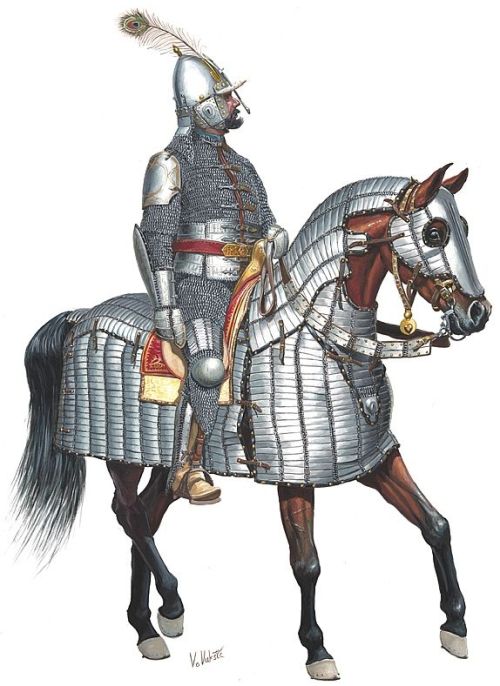
Earlier we mentioned how the Christian subjects were integrated into the Ottoman Empire society in the 14th century without too much resistance. Most of these Christian inhabitants came from the Balkans (called Rumelia by the newly arrived Turks), and many of their nobles were allowed to hold on to their native fiefs (now transformed into timars) and militarily support the Ottomans.
Suffice it to say, a significant part of the Ottoman military manpower was provided by these European fief-holders who were treated as vassals – with over 20,000 sipahis coming from the Balkan region in the 15th century. However by the late 15th century, especially after the capture of Constantinople, the Sultan proposed a more direct rule and uniform Islamic societal structure that sort of relegated the provincial Balkan nobles and their forces.
There was a political side beneath this religious veneer, with late 14th-century crusading endeavors inspiring several anti-Turkish uprisings in the region that were sometimes supported by the local princes.
Still, their military might couldn’t be ignored, and as such a new system was adopted that allowed the Ottomans to take some advantage of their Balkan ‘allies’. This entailed a hostage policy wherein sons of many Balkan noblemen were drafted into a new elite force called the müteferrika.
Also comprising sons of many Turkish noblemen, the müteferrika was incorporated into the existing kapikulu class and took part in battles as heavily armored horsemen. So basically these Balkan princes were paid and provided for by the Ottoman state, and yet couldn’t relinquish their status as hostages (probably until they fulfilled a certain period of service).
The Classic Battlefield Tactic of the Ottomans
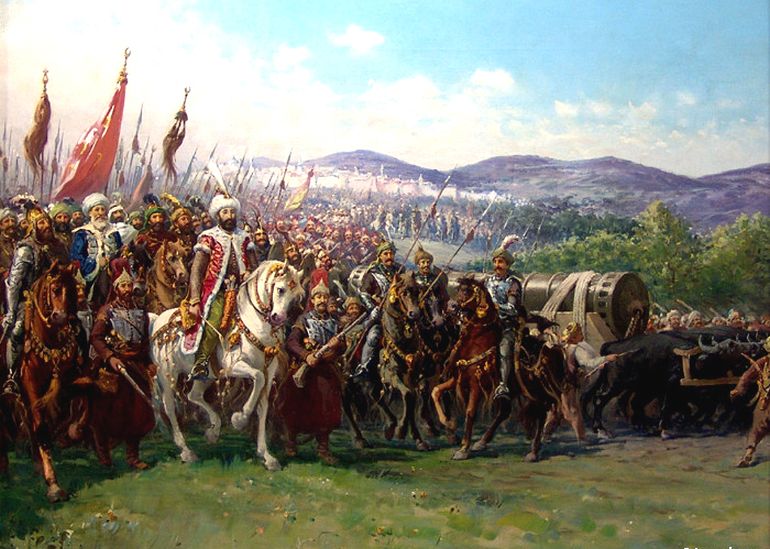
The 16th century arguably demonstrated the apex of the Ottoman Empire’s military domination with their incorporation of combined arms that conferred the tactical use of cavalry, infantry, and artillery. As aptly described in the Armies of the Ottoman Turks (by David Nicolle), the combined arms mirrored an organized, ‘classic’ battlefield tactic where the main army body entrenched themselves within field fortifications, gun wagons, and man-made ditches.
At the center of this massive body stood the sultan with his solak household guards and the elite Janissary forces armed with arquebuses. This chosen force was flanked on both sides by heavily armored alti boluk horsemen (gathered from household forces).
In the front and rear of the arrayed artillery stood the azaps, light infantrymen armed with bows, axes, and swords. On the further flanks stood the provincial Sipahi cavalry ready for mass enveloping maneuvers. And lastly, at the front of these entrenchments, the Ottomans unleashed their akinci – battle-hardened, light irregular cavalry forces that harassed the enemy with arrows and javelins.
So once the akinci forces were successful in aggravating the enemy (which some cases entailed feisty European knights and gendarmes), the azaps were ready to absorb the charge of the opponent. And once this initial (and often impetuous) charge was mitigated, the azaps opened up their formations for the Janissary arquebusiers.
One could only imagine the devastating effect of the firearm volleys unleashed upon the enemy forces – who were already surrounded by Ottoman ranks. And while the armored foes were ‘shocked-and-awed’ by combined barrages of artillery and arquebuses, the flanking Sipahis played their major role in surrounding the remnants of the enemy army and then mopping them up in a piecemeal fashion.
Specialization in Giant Cannons
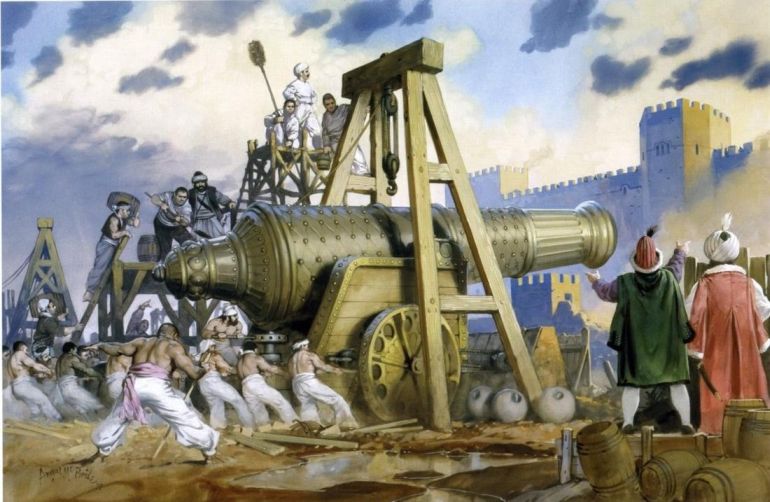
Given the earlier explanation of the classic battlefield tactic, suffice it to say, the Ottomans excelled in artillery-based warfare. Interestingly enough, the initial impetus for their engineering skills in gunpowder weaponry was probably offered by Balkan gun-makers and Jewish people who fled from Spain after the Moorish defeat. Over time the Turks specialized in such gun-making skills, which culminated in incredible giant cannons with ‘modular’ designs.
Simply put, the giant weapons were assembled on the battlefield itself, with their barrels being transported directly from the depots. One of the famous examples pertains to the gigantic siege cannon built by one Orban (who possibly hailed from Transylvania).
Used in the final siege of Constantinople in 1453 AD by the ascendant Ottoman Empire, this gun was supposedly completed in just three months (in Adrianople) and then dragged to the outskirts of Constantinople with the help of 60 oxen.
The scope was however not just limited to the size of the weapon systems, but also extended to their management during real-time battles. With some of the guns boasting over a mile in range (and the capacity of firing thousand-pound iron balls), accuracy was tantamount to breaching massive medieval defense structures.
For such preciseness, shots were sometimes compressed and then filled with the apt quantity of gunpowder in accordance with the required range. The shooting ambit also involved using sequential barrages, defensive mantlets (that provided cover for the artillerymen during reloading), and even illuminated range markers for accurate nighttime bombardments.
*Note – The article was updated on 4th November 2019.
Book References: Armies of the Ottoman Turks (By David Nicolle) / The Turkish Empire from 1288 to 1914 (By Valentine Eversley; Chirol) / The Ottoman Empire: The Classical Age 1300-1600 (By Halil İnalcık)
Sources: TheOttomans.org (link) / AllAboutTurkey / OttomanEmpire.info (link)
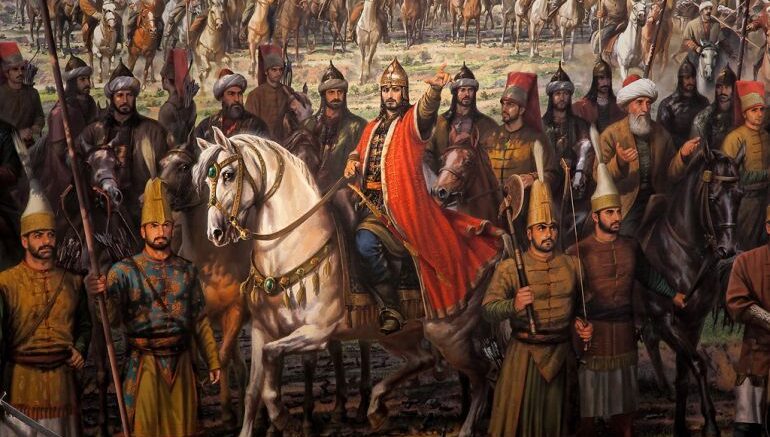
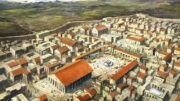
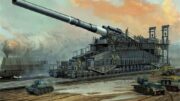
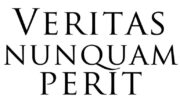

Be the first to comment on "The Military Of The Ottoman Empire: Origins And History"